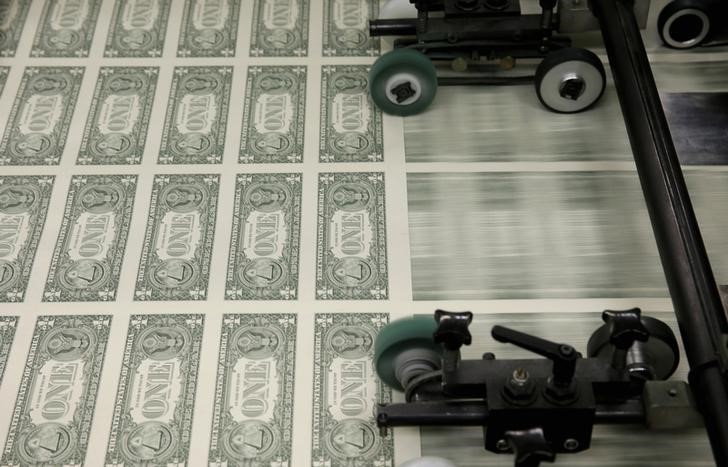Investing.com - The dollar remained broadly higher against a basket of other major currencies on Wednesday, as upbeat U.S. employment and trade balance data fuelled optimism over the outlook for second quarter growth.
In a report, payroll processing firm ADP said non-farm private employment rose by 201,000 last month, just above expectations for an increase of 200,000. The economy created 165,000 jobs in April, whose figure was downwardly revised from a previously reported increase of 169,000.
Separately, the U.S. Bureau of Economic Analysis said that the trade deficit narrowed to $40.88 billion in April from a deficit of $50.57 billion in March, whose figure was revised from a previously reported deficit of $51.37 billion.
Analysts had expected the U.S. trade deficit to narrow to $44.0 billion in April.
The U.S. dollar index, which measures the greenback’s strength against a trade-weighted basket of six major currencies, was up 0.31% at 96.30, off Tuesday's one-week low of 95.71.
EUR/USD slid 0.37% to 1.1112 after the European Central Bank held its benchmark interest rate at a record-low 0.05%, in line with market expectations.
Commenting on the decision, ECB President Mario Draghi said the bank's asset purchase programs "are proceeding well."
He added that asset purchases will continue until the end of September 2016 and "until we see a sustained adjustment in the path of inflation that is consistent with our aim of achieving inflation rates below, but close to, 2% over the medium term."
Data earlier showed that euro zone retail sales rebounded 0.7% in April and were up 2.2% from a year earlier.
Another report showed that the region’s unemployment rate fell to 11.1% in April from 11.2% in March.
The single currency also found some support earlier amid hopes that Greece will soon reach an agreement with its international lenders on a cash-for-reforms deal.
The pound was also lower, with GBP/USD down 0.51% to 1.5268.
Sterling came under pressure after the Markit services purchasing managers' index slowed to 56.5 last month from 59.5 in April. It was its lowest level since December. Economists had expected the index to tick down to 59.2.
Elsewhere, the yen and the Swiss franc were lower, USD/JPY up 0.40% to 124.61, re-approaching Tuesday's 12-year highs of 125.05 and with USD/CHF climbing 0.80% to 0.9407.
The Australian and New Zealand dollars were weaker, with AUD/USD down 0.20% to 0.7755 and with NZD/USD declining 0.86% to 0.7119.
The Aussie strengthened earlier, after the Australian Bureau of Statistics said gross domestic product rose 0.9% in the first quarter, beating expectations for a growth rate of 0.7% Year-on-year, Australia's GDP rose 2.3% in the three months to March, compared to expectations for an increase of 2.1%.
USD/CAD advanced 0.78% to trade at 1.2501 after data showed that Canada's trade deficit narrowed less than expected to C$2.97 billion in April from a revised deficit of C$3.85 billion the previous month.
